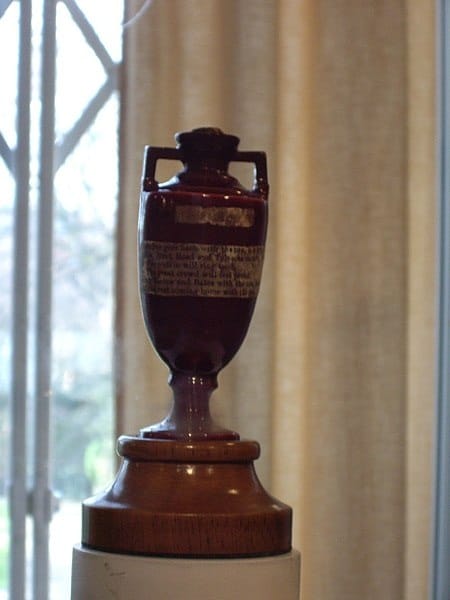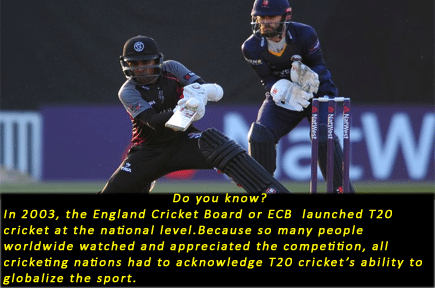GamePlan Today Talks has planned a virtual trip for you all. Yeah! We are getting you the best word journey elaborating the history and evolution of the cricket game.
Cricket seems to have a 500-year history, dating back to the middle to the late 1500s. Of course, it’s evolved a long way over the years, but the game’s name and fundamental principles are very ancient.
The Starting Point
Finding the roots of most old sports is difficult since they rarely can be directly traced to anything definite. For example, we only know that cricket was first heard in South-East England in the 16th century, although it was most likely played domestically long before that.
The Boy’s Game
The sport has a well-documented history dating back to the late 16th century. It was born in southeast England and has since become its national sport. Cricket was first mentioned as one adult activity in 1611, and a dictionary described cricket as a boys’ game in the same year.

By the early 17th century, village cricket had grown. The first English County Teams were founded in the century’s second half, with local specialists from Village Cricket. They were serving as the very first professionals. In 1709, the first documented game in which teams used county names was played.
The Popular Pastime & Adult’s Game During the 17th and 18th Centuries
Despite the uproar, adults and kids were playing cricket not soon after the occurrence. Several districts had their cricket teams in the 17th century. The nearby neighbourhoods competed against one other in local tournaments even before English Civil War broke out. Despite this, it wasn’t until the founding of the Hambledon Club in 1760 that cricket became a genuine, national-level sport.
The Marylebone Cricket Club or the MCC, which was founded in 1787 at Lord’s Cricket Ground, is credited for recording the rules of cricket. They were the people who first began developing and amending the Cricket Laws. The regulations have evolved dramatically since then, but it is where it all began, and somewhere along the way, cricket became England’s national sport.
International Cricket Makes Its Debut
British imperialism had the unintended consequence of introducing cricket to the rest of the globe during the Victorian era. As a result, many British colonies began to embrace the sport, and the first international game between the United States and Canada took place in 1844.

An Australian aboriginal team visited England in 1868, and the first formal test match between Australia and England took place in 1877. After Australia’s first win over England in 1882, a fake obituary for English cricket was published, and the Ashes series between the two countries was established.
The Well-Known International Game
We don’t link the Canada and United States with cricket’s history, although they were active in the sport long before any of the present cricketing nations.
The first international tournament in sports was a three-day cricket match between British Canada and the United States on 24 and 26 September 1844.
In front of hundreds of people on 30th Street and Broadway in Manhattan, Canada won that game by 23 runs. In case you’re curious, Bloomingdale’s St George’s Cricket Ground was built in 1844 in the very same location.
Cricket’s Internationalization

In 1877, Australia and England became the first formal nations to be acknowledged as test-playing nations at the same time. Almost over a century, the same prized right grew to include:
- 1928 – West Indies
- 1930 – New Zealand
- 1932 – India
- 1952 – Pakistan
- 1982 – Sri Lanka
- 1992 – Zimbabwe
- 2000 – Bangladesh
- 2018 – Ireland & Afghanistan
While numerous additional countries play cricket in shorter forms, only the teams listed above have been designated test-playing nations. However, younger cricketing nations have been awarded temporary ODI status, including Nepal, Scotland, the Netherlands, Namibia, Papua New Guinea, Oman, the United Arab Emirates, and the United States.
Limited Overs Cricket Format
The introduction of restricted overs, single innings contests was undoubtedly the most significant development in cricket. In England, those matches gained popularity in 1960, 1970, and the Gillette Cup, the first essential limited-overs tournament, was inaugurated in 1963.

T20 Cricket’s Influence
In 2003, the England Cricket Board or ECB launched T20 cricket at the national level. They were oblivious to the influence it would have on world cricket. The format gained popularity in England and quickly extended to Australia, India, and several other test cricket nations. Soon after, South Africa hosted the first 2007 ICC World Twenty20, often known as the T20 World Cup, when India claimed in a nail-biting finale against arch-rivals Pakistan.
Because so many people worldwide watched and appreciated the competition, all cricketing nations had to acknowledge T20 cricket’s ability to globalize the sport. As a result, several domestic and international leagues were formed or restructured to achieve greater heights due to the recognition of potential here.
When the KFC 20-20 Big Bash was rebranded and reformed as the Pro League in 2011, it became a more competitive tournament with a larger budget and foreign players.
The BCCI, on the other hand, opted to create the IPL in the same year that India won their first T20 World Cup. It was a phenomenal success, and it’s only become more prominent every year.

The Indian Premier League has a total brand value of $6.3 billion in 2019, making it the wealthiest cricketing tournament in any level’s history. Several other premier leagues followed suit, as predicted, in their own countries.
- IPL or Indian Premier League
- BBL or Big Bash League Australia
- BPL or Bangladesh Premier League
- CPL or Caribbean Premier League
- ECB Vitality Blast England
The Australian Big Bash League is currently in full swing, and the IPL 2022 have already been established. So now is the most fantastic time to keep up with news, updates, cricket predictions, transfers, and tips.
T20’s Contribution to Cricket’s Globalization
Even generations later, a test match is regarded as the most significant test of tolerance, stamina, and skill of cricketers. It is correct, but tests did not make cricket a worldwide sport; T20 did.
T20 was once believed to be a lesser form of cricket, and many well-known players even stopped playing in the shorter format, according to the International Cricket Council (ICC). However, even though that mentality has shifted, it raises the issue of what it is about the shorter game that has revolutionized and globalized cricket.
A limited-overs cricket Sunday League was introduced to the first-class country cricket in England just six years after the Gillette Cup was introduced. The first ODI or One Day International between Australia and England was contested in 1971.
Meanwhile, in England, in the format of Twenty 20, an even more radically contemporary cricket format was launched in 2003. The 20-over cricket took off instantly and is today as popular with cricket fans worldwide as any other format.
Even though most cricket fans might deny it, the answer is straightforward. Compared to a 5-day tournament with at least 90 overs bowled per day, witnessing a 2.5 to 3-hour match with breaks in between is an enjoyable and tremendously thrilling idea for everyone who enjoys competitive sports.
The amount of time required to watch test matches and sometimes even ODIs is in short supply among spectators. Cricketers make a living from the game, but even test fans, assuming they have a job, will find it difficult to watch a complete test.
As of late 2021, 91 countries play modern cricket, according to the International Cricket Council (ICC). It was a long trip for a game that began as a boys’ game and evolved into one of the world’s most popular international sports. However, it is still in its infancy, particularly in women’s cricket.
There’s no arguing that women’s cricket has gone a long way since its inception, but there’s still a lot of opportunity for support and progress in terms of sponsorship, audience, and worldwide involvement.
Flashing stumps, ball tracking, and bails for exact run-out decision making, edge detection technology, and infrared cameras can be used to see whether the bat has hit the ball. The Duckworth-Lewis-Stern technique could be used to determine targets and outcomes in limited-overs contests that have all been the latest technological advancements in the game.

In a series between Sri Lanka and India in 2008, a novel referral system in which cricketers could point some on-field judgments to the third umpire debuted its international game. The formal Decision Review System has developed from this.
Summing Up
Our GamePlan, Today Talk’s tour of cricket’s history, has finally brought us up to the present. We think we have poured enough minute details about the history and evolution of global cricket. Are you very excited to explore more of this world? Then, trace our blogs, articles and predictions on our website.
Be awaiting our upcoming current and trending cricket information in GamePlan Today Talks.
